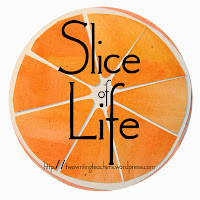The question arises- How do we best facilitate lifting the writing out and up in order for it to be shared with a broader audience? How can we as teachers of writing support inexperienced young writers to successfully move from collecting writer’s notebook entries
to identifying their own writing projects.
Helping the inexperienced writer avoid becoming trapped in a whirlpool of copious notebook entries (that never grow and develop into something more fully developed) remains a critical consideration, for those of us responsible for teaching writing.
The writer’s notebook is a tool for writing. It is not intended for the entries to become ensnared; trapped in a word prison. The notebook contains many beginnings and not all of them are destined to be launched beyond the notebook pages, but their presence affords the writer options. The skill lies in identifying and lifting out that piece, or pieces, the writer feels have the most potential for developing into something beyond the notebook page. It will be a piece they can imagine themselves working on for a longer time.
In order to be able to exercise this option, young writers must be assisted to develop expertise regarding their own body of work. Which entries matter most to the writer?

It is at this critical point the skill of rereading presents as vitally important. Our teaching energy needs to be directed towards embedding rereading as a feature of the writing process employed by student writers.
· We must assist them to reread as they write
· We must assist them to reread after they have written.
It is preferable if the rereading that occurs after the writing is conducted 'aloud' in order for the writer to hear the words as a reader would experience them. Encourage them to conduct this rereading alone, with a pen/pencil in their hand. They can read to the walls and windows of the classroom and make necessary changes as they go.
Regular reading of notebook entries will assist the writer identify which entries are worthy of further attention and consideration as a possible writing project. All this rereading helps develop a critical lens through which potential projects can be viewed.
Rereading can be employed to help the writer mine new writing possibilities from their older words, their earlier entries.
All these rereading actions grow the capacity of the inexperienced writer to more confidently appraise their own writing. It encourages the growth of reflection and assists the writer to develop a clearer vision of what might be possible. In growing such reflective writers, modelling and demonstration become vital. These impressionable learners need to see their teachers regularly engaging in these same reflective processes.
They benefit from seeing their teachers:
Reflect on their own writing processes.
Their own decision making processes.
Sharing their noticing / learning.
In time and with regular teacher demonstrations, young writers with encouragment, begin sharing their own processes, as well as their writing.
Strategies
To Grow ‘Writing Projects.’
· Encourage more writing from students.(build writing
stamina)
· Rewrite a part of a larger text before discussing the
impact of the rewrite.
· Consider examples that support your thinking around a
topic, or the thinking of a character.
· Do some wondering: why is this piece of writing important
to me?
· Brainstorm to gather additional ideas connected to
your writing piece.
-are there wider connections?
-are there connected memories I can
include?
Students can be further supported in developing a more
metacognitive view of their writing through:
Consider also the power to influence attitude and action of young writers through:
- Modelling your own revisions
- Modelling your own brainstorming
- Your own rereading (Think Aloud)
Demonstrate your own specific revisions on a piece of writing
you have chosen to lift from your writer’s notebook:
These writing actions used in concert further demonstrate for the inexperienced writer how a writer’s notebook
informs the writing that follows. It reinforces the notion of the notebook as a
valuable launching pad for writing projects. It becomes more than a repository
for their writing ideas. It is not the end, but rather the beginning of something much larger.
When these actions are modelled for students they are
witnessing a writer’s commitment to a project. They are learning about persistence
and stickability. They are learning writers make decisions and then take specific
action to realize their predetermined goal. Great writing lessons. Great
lessons for life.









Comments
Post a Comment